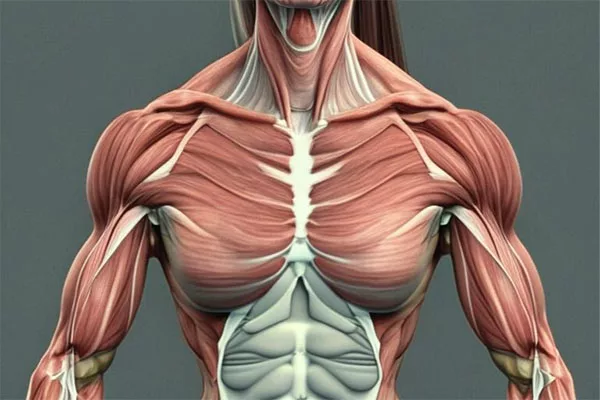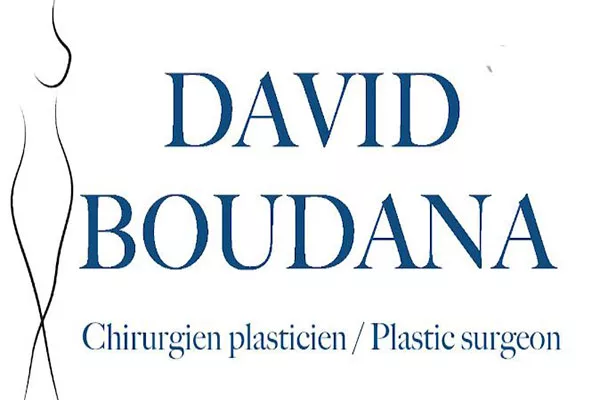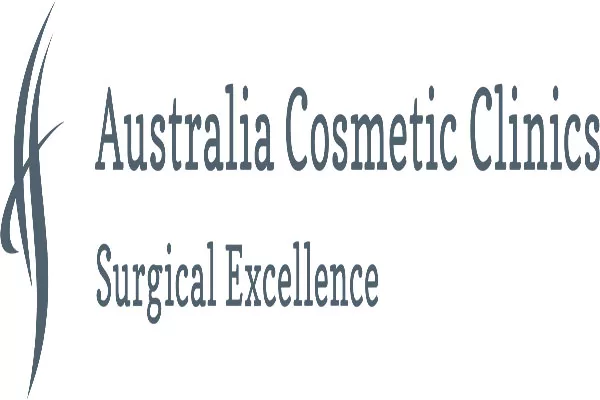Breast implant revision surgeries are done to fix issues that may arise after an initial breast implant surgery. One such issue is severe muscle flex deformity or double bubble, which can occur when the implant drops too low on the chest and creates an indentation or crease near the bottom of the breast. This can be both aesthetically unpleasing and uncomfortable for the patient. In this article, we will explore what muscle flex deformity and double bubble are, what causes them, and how they can be addressed through breast implant revision surgery.
Understanding Muscle Flex Deformity and Double Bubble
Muscle flex deformity and double bubble are two different but related conditions that can occur after breast augmentation. Muscle flex deformity happens when the implant sits too high on the chest, causing the muscle to flex unnaturally when the patient moves their arms or chest muscles. This can make the breast appear distorted or misshapen when the muscle is flexed.
On the other hand, double bubble occurs when there is a visible crease or line at the bottom of the breast, creating the appearance of two separate bubbles. This can happen when the implant drops too low on the chest, creating an indentation or crease, which can be especially noticeable when the patient is lying down. Both conditions can be bothersome for patients who wish to maintain a natural and aesthetically pleasing breast appearance.
Causes of Muscle Flex Deformity and Double Bubble
Several factors can contribute to the development of muscle flex deformity and double bubble after breast augmentation surgery. Some of these factors include:
- Poor implant placement: If the implant is not placed correctly in the breast pocket, it can move too far upward or downward, resulting in muscle flex deformity or double bubble.
- Preexisting breast asymmetry: If the patient has breast asymmetry before surgery, it can increase the risk of developing muscle flex deformity or double bubble.
- Large implants: Implants that are too large in size compared to the patient’s natural breast tissue can stretch the skin and muscles, causing muscle flex deformity or double bubble.
- Capsular contracture: Capsular contracture occurs when scar tissue forms around the implant, causing it to harden and contract. This can put pressure on the implant, leading to muscle flex deformity or double bubble.
- Postoperative complications: If the patient experiences complications such as hematoma or infection after surgery, it can increase the risk of developing muscle flex deformity or double bubble.
Symptoms of Muscle Flex Deformity and Double Bubble
The main symptom of muscle flex deformity is the appearance of distorted breasts when the patient moves their arms, chest muscles, or engages in physical activity. It can cause an unnatural appearance and may make the breast look like it’s riding high on the chest.
With double bubble, the main symptom is a visible crease or line at the bottom of the breast that makes it look like two separate bubbles. It can be especially noticeable when the patient is lying down. Sometimes, it might feel uncomfortable or tight when wearing certain types of clothing or bras.
Either condition can cause a lack of confidence, self-consciousness, and frustration in the patient. These symptoms can make it challenging for them to wear certain types of clothing, swimwear, or lingerie, affecting their quality of life.
Diagnosis of Muscle Flex Deformity and Double Bubble
If a patient is experiencing symptoms related to muscle flex deformity or double bubble, they should seek medical attention. A physician or plastic surgeon will perform a physical examination to determine the extent of the condition.
An ultrasound or MRI might be recommended to get a better understanding of the issue, determine the cause, and plan for the surgery. The surgeon may take photographs or use computer imaging technology to help show the patient the potential outcome of the surgery.
A patient’s medical history, including any previous surgeries or medical conditions, will be taken into account before a diagnosis is made. The physician or surgeon may also ask the patient about their family medical history and any medications or supplements they are currently taking.
Treatment Options for Muscle Flex Deformity and Double Bubble
Once a diagnosis is made, breast implant revision surgery is usually required to address muscle flex deformity and double bubble. There are several surgical techniques a surgeon can use depending on the extent and cause of the condition.
- Implant exchange: If the current implant is too large or too small for the patient’s natural breast tissue, an implant exchange may be recommended. This involves removing the current implant and replacing it with a new implant of the appropriate size.
- Capsulorrhaphy: Capsulorrhaphy is a surgical technique that involves creating internal sutures around the implant to prevent it from moving or sagging. It helps to reshape the breast and correct muscle flex deformity or double bubble.
- Pocket revision: If the implant was not placed correctly in the breast pocket, a pocket revision may be necessary to reposition the implant in the correct location to correct the deformity.
- Fat transfer: In some cases, the surgeon may recommend a fat transfer to prevent the occurrence of muscle flex deformity or double bubble after the surgery. This involves removing fat from one part of the patient’s body and transferring it to the breast to create a natural-looking contour.
The surgeon will discuss the appropriate treatment options with the patient and create a personalized treatment plan based on their individual needs and goals.
Recovery After Breast Implant Revision Surgery
Breast implant revision surgery is an outpatient procedure that can take several hours depending on the extent of the condition being corrected. Patients are put under general anesthesia during the surgery and will require someone to drive them home after the procedure.
Patients may experience some pain, swelling, and bruising after the surgery, which can usually be managed with medication prescribed by the surgeon. The patient will need to wear a compression garment for several weeks to aid in the healing process and to help reduce swelling.
Most patients can return to work and normal activities within a week or two of the surgery, depending on the extent of the procedure. However, it’s essential to follow the surgeon’s postoperative instructions carefully to avoid any complications or delays. Patients should avoid strenuous activities and heavy lifting for at least four weeks to allow the implant to heal correctly.
The surgeon will schedule follow-up appointments to monitor the patient’s progress and determine if any further adjustments or treatments are required. It’s essential to attend all scheduled appointments to ensure the best possible outcome.
Risks and Complications of Breast Implant Revision Surgery
As with any surgical procedure, there are risks and potential complications associated with breast implant revision surgery. These include:
- Bleeding or hematoma
- Infection
- Capsular contracture
- Implant rupture or deflation
- Changes in nipple sensation
- Scarring
- Anesthesia complications
Patients should discuss these risks with their surgeon before the surgery and report any unusual symptoms or problems after the surgery. It’s essential to follow the surgeon’s postoperative instructions carefully to minimize the risk of complications and promote a speedy recovery.
Choosing a Qualified Surgeon
Choosing a qualified and experienced plastic surgeon is essential to achieving a successful outcome from breast implant revision surgery. Patients should look for a surgeon who is board-certified in plastic surgery and has a good reputation with previous patients.
The surgeon should have experience in performing breast implant revision surgeries, including addressing muscle flex deformity and double bubble. They should be able to discuss the procedure in detail and have open communication with the patient about their expectations and the potential risks and complications involved.
Patients should also schedule an initial consultation with the surgeon to get a better understanding of their approach to the procedure and determine if they feel comfortable with the surgeon. During the consultation, patients should ask to see before-and-after photos of previous patients with similar conditions as theirs to get a better idea of the surgeon’s abilities.
Ultimately, patients should choose a surgeon they feel confident in and who they believe can deliver the results they desire.
Conclusion
Muscle flex deformity and double bubble are two common issues that can occur after breast implant surgery. These conditions can be corrected through breast implant revision surgery, which involves surgical techniques such as implant exchange, capsulorrhaphy, and pocket revision.
Patients should seek medical attention if they experience symptoms related to muscle flex deformity or double bubble. They should choose a qualified and experienced plastic surgeon to perform the procedure and follow all postoperative instructions carefully.
Although there are risks and potential complications associated with breast implant revision surgery, most patients achieve a successful outcome and an aesthetically pleasing breast appearance. Patients should discuss their expectations and goals with their surgeon to create a personalized treatment plan that’s right for them.
References:
1. American Society of Plastic Surgeons. Breast Implant Revision Surgery. Available at: https://www.plasticsurgery.org/cosmetic-procedures/breast-implant-revision.
2. Leedy, J. E., Janis, J. E., & Rohrich, R. J. (2012). Revision breast augmentation: evidence-based analysis and review. Plastic and reconstructive surgery, 130(4), 892-908.
3. Adams, W. P., Mallucci, P., & Metzinger, S. E. (2012). The double-bubble deformity: cause, prevention, and treatment. Plast Reconstr Surg, 129(1), 49-58.
4. Gradinger GP, Kovacs L. Dealing with the double bubble. Plast Reconstr Surg. 2005 Aug;116(2):972–973. Available at: https://journals.lww.com/plasreconsurg/fulltext/2005/08000/dealing_with_the_double_bubble.61.aspx.
5. McGuire, P., Reisman, N. R., Murphy, D. K., & Beverly, J. K. (2011). Predictors of early implant loss after primary breast augmentation. Aesthet Surg J, 31(4_suppl), 1S-6S.







